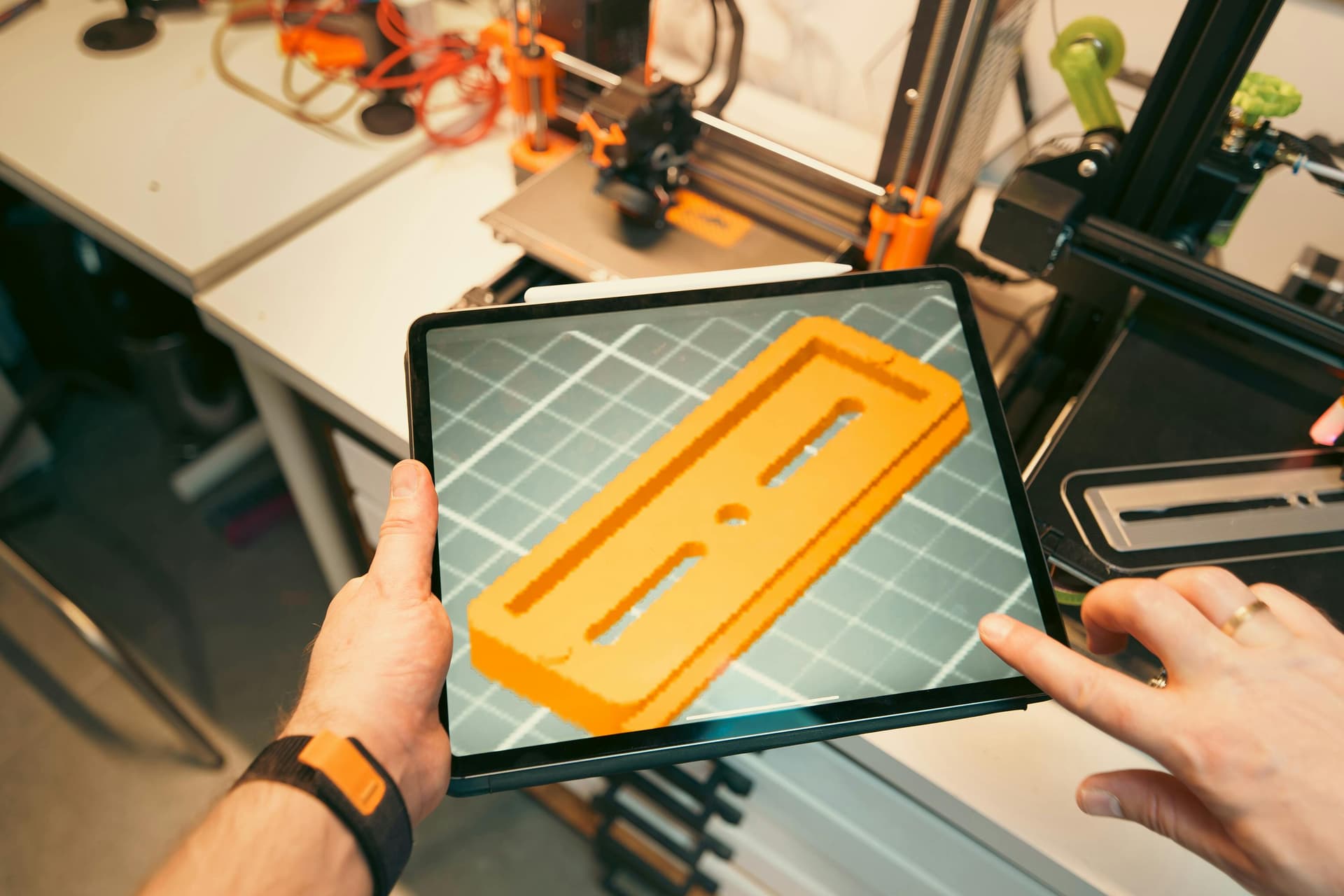Blog
The Future of Manufacturing: How AI is Revolutionizing Custom Part Design
3 min read

Introduction
AI is transforming manufacturing by accelerating CAD workflows, automating design optimizations, and integrating instant manufacturability analysis. Traditional CAD design was slow, iterative, and costly. Now, AI-powered design tools are enabling faster, smarter, and cost-effective custom part development.
How AI is Changing CAD and Manufacturing Design
AI-Generated CAD Models vs. Traditional Design
Manual CAD workflows require engineers to iteratively refine a design, a process that can take days or weeks. AI-powered generative design software allows engineers to input performance constraints, and the AI automatically generates multiple viable designs in hours, optimizing for weight, strength, and material use.
- Example: General Motors used Autodesk’s AI-driven generative design to create a 40% lighter, 20% stronger seatbelt bracket by consolidating eight parts into a single optimized component.
- Key Benefits: Faster design cycles, reduced material usage, optimized geometries.
AI-Powered Design Software for Engineering Optimization
AI algorithms analyze complex datasets to enhance design efficiency and manufacturability:
- Automated stress testing and performance simulations: AI can predict weak points before physical prototyping.
- Shape and material optimization: AI reduces weight while maintaining structural integrity.
- Example: Airbus used AI to create a bionic partition—a 45% lighter aircraft divider with an optimized, bone-like structure, impossible to conceive manually.
Automated Manufacturing Design: The Next Frontier
AI for Design for Manufacturability (DfM)
AI eliminates costly late-stage modifications by automatically checking manufacturability during design:
- Instant DfM Analysis: AI identifies potential manufacturing issues (e.g., undercuts, thin walls) and suggests solutions.
- Example: Protolabs uses AI to analyze CAD files, providing DfM feedback in hours instead of days.
AI-Powered Instant Quoting and Production Optimization
Manufacturers integrate AI-driven instant quoting engines into digital platforms:
- Example: Xometry AI analyzes 3D models, returning real-time pricing, lead times, and DfM guidance for CNC machining, sheet metal fabrication, and 3D printing.
- Cost Savings: AI eliminates inefficiencies in quoting, reducing unnecessary manufacturing steps.
Real-World AI Applications in Manufacturing
Case Study: AI in Aerospace Design
- Airbus’s Bionic Partition (45% weight reduction): AI optimized the structure for strength while reducing material costs.
- Impact: Estimated 465,000 metric tons of CO2 reduction per year.
Case Study: AI in Automotive Engineering
- GM’s Generative Bracket (40% lighter, 20% stronger): AI consolidated an 8-part seatbelt bracket into a single 3D-printed part.
- Impact: Improved fuel efficiency, reduced assembly complexity.
Case Study: AI in Industrial Equipment
- Harting’s AI-Assisted Connector Design: AI generates custom connector CAD models in minutes, replacing a previously manual, multi-hour process.
- Impact: Faster lead times, optimized component selection, reduced design costs.
Placeholder: Rocket Brackets’ AI-Powered Bracket Design
- AI-Driven Workflow: Engineers input parameters (e.g., load, mounting points, material), AI generates an optimized bracket ready for fabrication.
- Benefits: Eliminates back-and-forth between design and machinists, reducing lead times and costs.
Challenges and Future Trends in AI-Assisted Manufacturing
Key Challenges
- Manufacturing Complexity: AI-generated designs may be too intricate for traditional fabrication methods.
- Adoption Barriers: Engineers may resist AI integration due to lack of trust or training.
- Computational Resources: AI-driven CAD requires high-performance computing, limiting access for smaller firms.
Emerging AI Trends in Manufacturing
Real-Time AI Assistance in CAD
- Future CAD systems will feature AI co-pilots that suggest manufacturability improvements in real time.
- Example: Siemens NX is developing AI-assisted design interfaces.
AI + Natural Language Interfaces
- AI will soon enable text-based CAD modifications: “Make this part 2mm thinner.”
- Example: NVIDIA is working on AI-driven text-to-3D modeling tools.
AI + Digital Twins for Continuous Optimization
- Real-time sensor data will feed into AI models to improve future designs.
- Example: AI could modify turbine blade geometries based on wear data from deployed aircraft engines.
Conclusion
AI is revolutionizing custom part design by enabling engineers to create optimized models in a fraction of the time while improving manufacturability and cost-efficiency. Real-world applications from Airbus, GM, and Harting prove AI’s potential in industrial design. The future of AI in manufacturing will involve real-time assistance, text-driven CAD interfaces, and continuous design refinement via digital twins.
Takeaway for Engineers:
- Adopting AI-driven design tools will soon be essential for staying competitive.
- AI won’t replace engineers—it will enhance their capabilities, making workflows faster, more innovative, and cost-effective.
The future belongs to engineers who leverage AI as a powerful design partner. The question is not whether AI will transform manufacturing—it already has.
Try finalREV today
Upload your STEP or STP files instead and receive an instant quote.
Browse Files or drag and drop to upload
Uploads are safe, secure and confidential.
